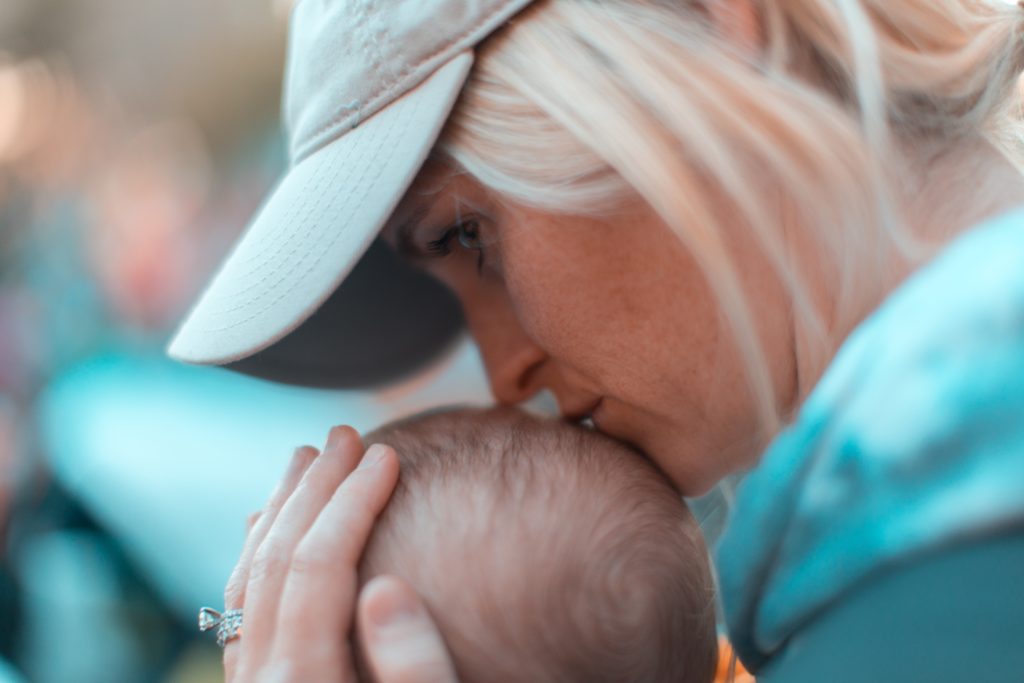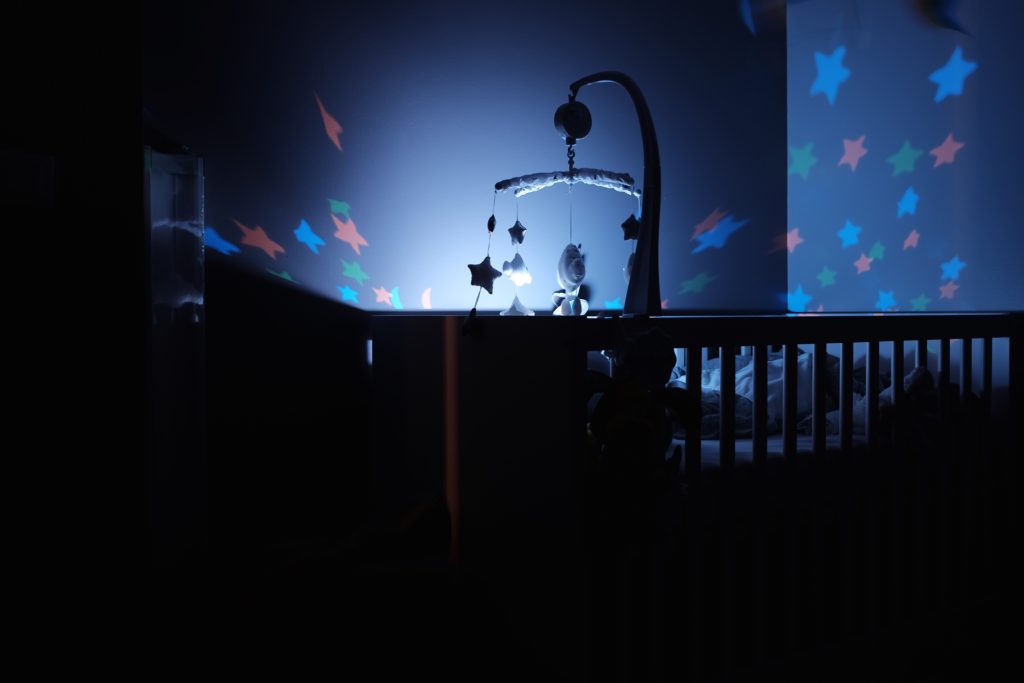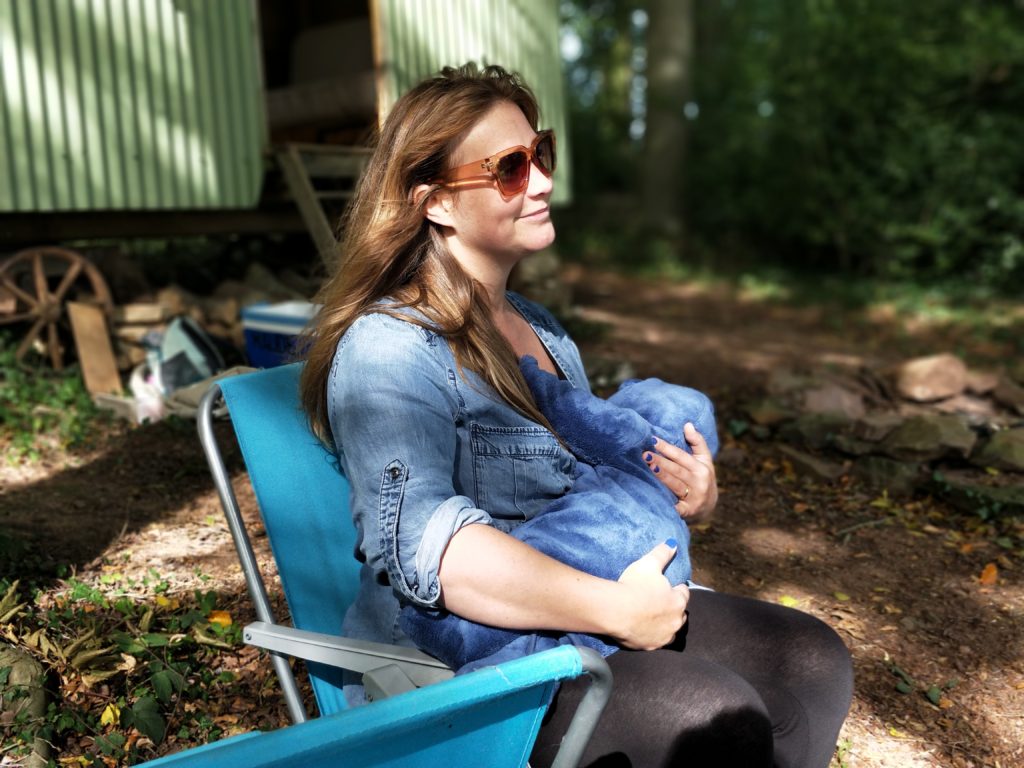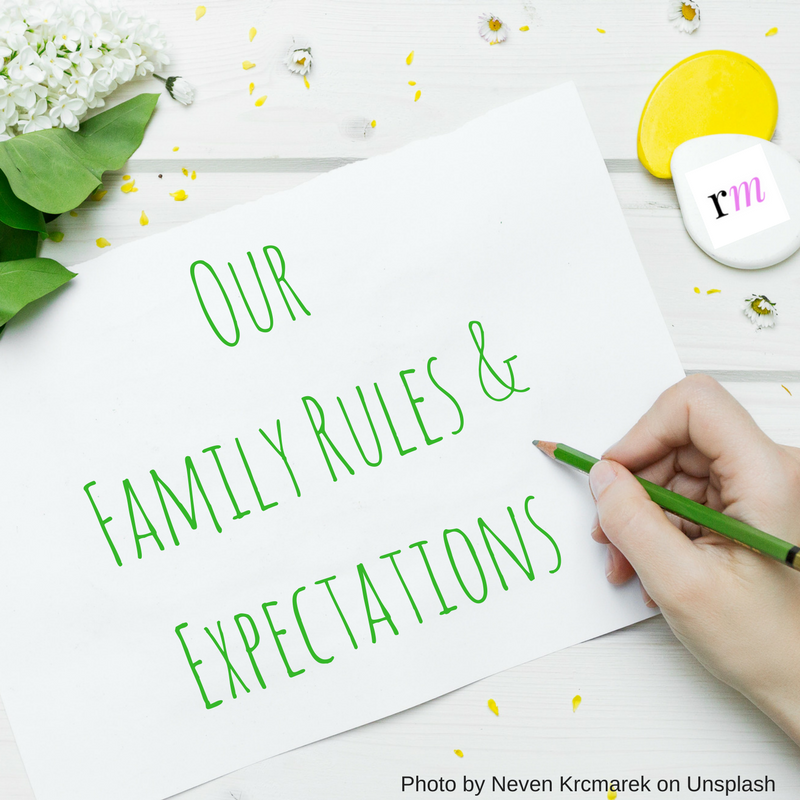Sleep, Glorious Sleep
There is nothing better than snuggling with a new baby. The way he smells, the little cute faces he makes, the feel of his skin on your skin…it’s the most wonderful thing in the world. You nurse him for a while, gaze lovingly upon him for a while longer, then you both fall asleep looking and feeling like an ad for Parents magazine.

Fast forward one year and it’s a bit different. Trying to relax while nursing your toddler to sleep is futile. He squirms. He bites you. He weighs a million pounds and your arms fall asleep. Every movement, every noise startles him awake. When he finally does fall asleep, you feel trapped and are so afraid of accidentally coughing or moving that you can hardly breathe, let alone fall asleep. Eventually, you decide that you have to put him in his crib, but no matter how careful you are, he wakes up and cries and you have to start all over again. Or you take him into your bed, where the cycle repeats itself over and over all night long.
But what do you do? How else can you get him to fall asleep? Is it okay to let him cry? For how long? Will he be scared? Angry? Permanently psychologically damaged??

I won’t get into the co-sleeping debate (or the cry-it-out debate, for that matter – emotions run high around infants and sleeping), but we have slept with most of our babies when they’re tiny. It makes breastfeeding easier, I think it helps with bonding, and I like being able to hear and feel them breathing. To me, the evidence that co-sleeping reduces the risk of SIDS is pretty compelling. And, let’s be honest: I’m lazy, and going back and forth to the crib all night is a lot of work.
However, inevitably, there comes a day when co-sleeping is no longer working – for any of us. No one has enough room, the baby can’t figure out how to fall asleep and ends up nursing ALL NIGHT LONG, and I feel like a zombie who would do anything (sucking out brains? maybe…) for five minutes of sleep without anyone touching me.

Figuring out how to get the baby out of your bed can be overwhelming. It’s hard to do anything new with your baby’s routine, even when what you’re doing isn’t working, because you’re terrified of making it even worse. Is only getting 6 hours of constantly interrupted sleep at night awful? Yes. But what if trying something new keeps you up even more? What if you don’t get any sleep at all? How can you possibly stay awake long enough for your baby to soothe himself to sleep when you’re already exhausted at 7 pm?? When you’re short on sleep, you guard it like a nine year old guards his favorite LEGO minifigure. It takes guts to make a change, and I’ve wimped out many, many times.
However, I have recently gotten desperate enough to read not just one, but two books on how to get your baby to sleep, and they were very similar and VERY effective. I’ll put the links to them below. I’m going to give you the shortened version, without any of the background explanation on why it works (does it matter?) or why it won’t hurt your baby (bottom line: a little bit of crying is not as bad as a miserable, sleep-deprived family). This technique is SO simple, SO fast, and SO gentle. It worked for me in LESS THAN A WEEK, and I’m the worst baby-getter-to-sleeper that I’ve ever met. This works for naps, too, which we are now enjoying on a daily basis. The books advise starting at no earlier than 4 months; it worked like a dream for my 13-month old.
Step One:
Figure out a bedtime routine. It can be as elaborate or as simple as you want it to be. Include elements like: taking a bath, putting on pajamas, playing quietly together, reading a story, saying goodnight to the baby’s toys, turning on a noise machine or fan, saying prayers, etc. Try to do the routine in the same order every night. If you make nursing or a bottle part of the routine, make sure the baby is NOT asleep when you put him in his bed. We started out pretty elaborate but have pared it down to: bath, pajamas, nurse for five minutes, bed. The optimal bedtime for toddlers and babies is between 7 and 7:30, so start your routine well before that time. Don’t worry, your baby will sleep for HOURS when he’s in his own bed. Our one-year-old is regularly sleeping for 12 hours at night now that he’s not in bed with us; he used to sleep fewer than 9. Don’t try to move bedtime later in order to get a later wake-up time; that actually backfires and causes them to wake up earlier (I don’t understand why, but the books both go into the science behind it).
Step Two:
Figure out what you’re going to say when you check on your baby. It should be the same phrase every time you check on him. Ours is, “I’m just checking on you; I love you; good night.” Practice it, post it on the door, and make sure you say it in a calm, loving voice. If you sound frazzled and annoyed, it won’t be as effective. If you vary the wording, even a little bit, it won’t be as effective.
Step Three:
Do it. Do your bedtime routine and put the baby in bed. Say your phrase (we omit the “I’m just checking on you” and just say, “I love you; good night”). He will probably be crying. If he is crying, check on him at these intervals until he stops:
1st check: 5 minutes after you put him in bed
2nd check: 10 minutes after the first check
3rd check: 15 minutes after the second check
All subsequent checks: 15 minutes apart until he stops crying
When you do your checks, walk into the room, say your phrase, and leave. Don’t touch him. Don’t add anything to your phrase. Don’t rearrange his blankets, give him a toy, or do anything other than say your phrase. If you vary what you do, the baby doesn’t know what to expect, and it stresses him out. If you do the exact same thing every time, it soothes and reassures him.
If he starts crying again later in the night, do the checks at the same intervals until he stops.
If he’s poopy, or he’s got his arm or leg stuck in the crib, or something like that, go ahead and fix the problem as quickly and quietly as possible, then continue with your checks.
Step Four:
Marvel at how great a parent you are. For us, this system worked immediately, and we’ve never had to do more than four checks. Usually, especially at naptime, we don’t have to do any checks at all. It doesn’t seem to matter which one of us does the bedtime routine or the checks, but I usually do most of it because our baby is going through kind of a mom obsession right now. This is working for us even though we’re using the laundry room for his sleeping space, since he shares a room with his brothers and we can’t figure out how to get them all to sleep at the same time. We’re just using a portable crib and a white noise machine, and he seems to love it.
The books I’m linking below will give you more information about troubleshooting, how to modify the system for older kids, and why sleep is so important for development. I highly recommend finding both of these books – even paying full price if you have to – and reading them cover to cover. But if you’re desperate and too sleep-deprived to imagine reading an entire book, or waiting for it to ship, just start with this post and see what happens. If it worked for us, there is hope for everyone.

The Books That Helped Me:
The Happy Sleeper: http://thehappysleeper.com/book/
The Sleepeasy Solution: https://www.goodreads.com/book/show/474621.The_Sleepeasy_Solution


